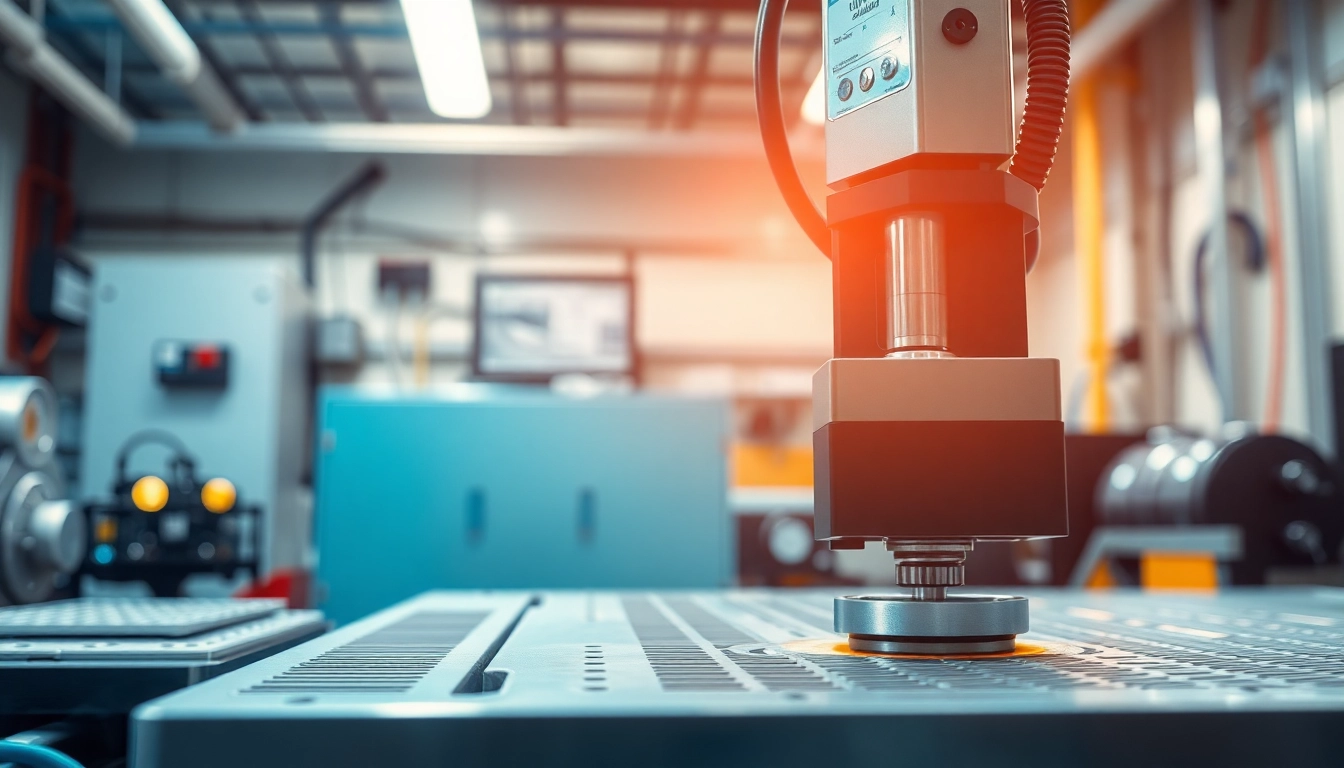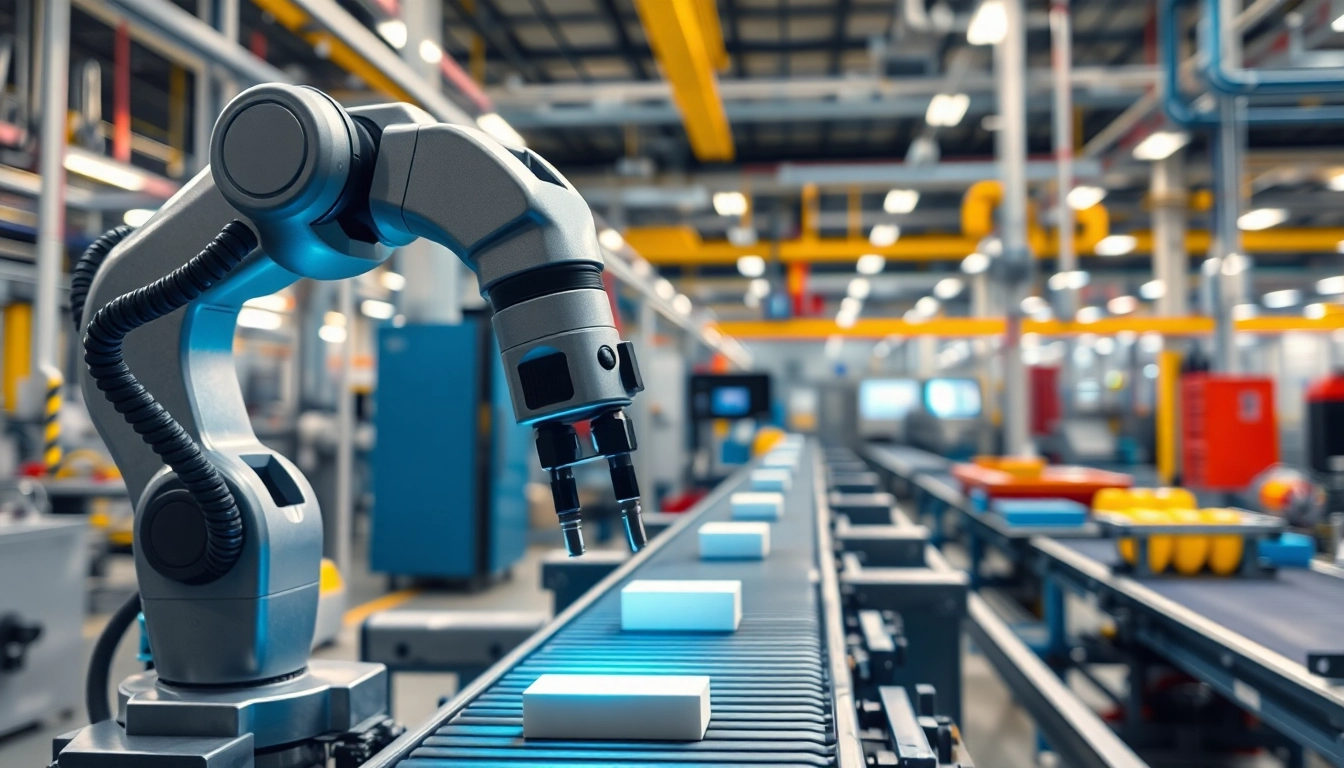Understanding the Laser welding machine
What is a Laser welding machine?
The Laser welding machine is a sophisticated device that utilizes laser technology to create precise and strong welds in a variety of materials. Unlike traditional welding methods, which often rely on heat and other mechanisms to fuse materials, laser welding concentrates a high-intensity beam of light on the workpiece. This focused beam generates localized heat, rapidly melting the material and allowing it to fuse together upon cooling. The result is a clean and highly controlled welding process that minimizes distortion and allows for greater precision in joining materials.
How a Laser welding machine works
The operational principle of a Laser welding machine can be summarized in three key components: the laser source, the focusing optics, and the workpiece. The process begins with a laser generator producing a focused beam of light. This beam can be derived from various types of lasers, such as fiber, CO2, or solid-state lasers, each offering distinct advantages for specific applications.
Once generated, the beam is directed through a series of lenses that focus it down to a very fine point. This concentrated energy is then directed onto the workpiece, where it raises the temperature of the material to its melting point. As the laser is moved along the joint of the materials being welded, the molten material fuses together, forming a strong bond as it cools and solidifies. The entire process is often automated and controlled via CNC (Computer Numerical Control) systems to ensure precision and repeatability.
Benefits of using a Laser welding machine
Utilizing a Laser welding machine is accompanied by numerous benefits that set it apart from conventional welding techniques:
- High Precision: The laser’s focused energy allows for very precise control over the welding process, making it ideal for intricate designs and small components.
- Low Heat Input: Laser welding generates less heat than traditional methods, significantly reducing thermal distortion and altering properties in the surrounding material.
- Versatility: Laser welding can be used across various materials, including metals, plastics, and even ceramics, making it applicable in a multitude of industries.
- Speed: The laser welding process is faster than many traditional welding methods, increasing overall productivity.
- Minimal Post-Processing: The clean and precise nature of laser welding often means less need for post-welding cleanup and finishing, saving time and money.
Applications of the Laser welding machine
Industries leveraging Laser welding machine technology
Laser welding has found its applications across a diverse range of industries, each benefiting from its unique properties:
- Aerospace: In aerospace manufacturing, laser welding is used to join components with critical safety requirements, providing strong joints while significantly minimizing material stress.
- Automotive: The automotive industry utilizes laser welding for joining structural components and body panels, improving assembly efficiency while maintaining high quality.
- Electronics: In electronics, laser welding is employed to connect tiny components such as circuit boards, ensuring precise and reliable connections.
- Medical Devices: The fabrication of medical devices benefits from laser welding’s ability to create sterile and precise joints, essential for safety and functionality.
- Jewelry: In the world of fine jewelry, laser welding enables the joining of delicate pieces with minimal visible seams, preserving aesthetics and integrity.
Specific use cases for Laser welding machine
Several compelling use cases exemplify the capabilities of laser welding technology. For instance:
- Battery Manufacturing: Laser welding is used to join battery terminals and other components, ensuring robust connections that withstand various stresses.
- Automotive Fuel Cells: The assembly of fuel cells in vehicles employs laser welding for efficient and secure bonding of component parts.
- Watch Manufacturing: The delicate components of watches require precision welding, which laser technology readily provides without damaging surrounding parts.
Advantages in manufacturing processes
Integrating a Laser welding machine into manufacturing processes streamlines operations and enhances output quality:
- Increased Throughput: Faster welding speeds increase production rates, leading to more products completed in shorter timeframes.
- Reduced Waste: Precise energy application minimizes material usage and waste, contributing to more sustainable manufacturing practices.
- Customizability: Laser welding systems can be easily programmed for a variety of tasks, accommodating changes in production needs without significant downtime.
Choosing the Right Laser welding machine
Key features to consider
When selecting a Laser welding machine, several critical features should be evaluated:
- Laser Type: Different lasers (fiber, CO2, solid-state) offer varying benefits; understanding their characteristics allows for the selection of the most suitable option for your specific applications.
- Power Output: The power of the laser will impact the welding speed and capability to work with different materials and thicknesses.
- Cooling System: An effective cooling system is essential to maintain constant performance and minimize the risk of damage to the equipment during operation.
- Control Systems: Advanced control systems allow for precise adjustments to laser parameters, improving the adaptability and effectiveness of the welding process.
- Safety Features: Safety should be a priority; features like protective enclosures and interlocks improve operator safety during the welding process.
Comparing Laser welding machine types
Understanding the differences between various types of Laser welding machines can aid in making an informed decision:
- Fiber Lasers: Known for high efficiency and versatility, fiber lasers are advantageous for many materials and applications due to their excellent beam quality.
- CO2 Lasers: Primarily used for cutting thin and reflective materials, CO2 lasers are effective for specific tasks but may require additional setups for welding.
- YAG Lasers: Solid-state lasers are beneficial for achieving high-power outputs; however, their cost and maintenance require careful consideration.
Cost considerations for a Laser welding machine
The investment in a Laser welding machine involves several cost factors that should be deliberated:
- Initial Purchase Cost: The base cost varies significantly based on the type, features, and manufacturers.
- Operational Costs: Evaluate costs associated with energy consumption, maintenance, and consumables necessary for operation.
- Potential Savings: Consider the long-term savings gained from increased efficiency, reduced waste, and cost-effective manufacturing processes that the machine facilitates.
Maintenance and Optimization of the Laser welding machine
Regular maintenance practices
Establishing a routine maintenance schedule is crucial for ensuring the longevity and optimal performance of a Laser welding machine. Key maintenance practices include:
- Cleaning: Regular cleaning of lenses and optics ensures unobstructed laser transmission and prevents quality degradation.
- Calibration: Periodic calibration of the laser system helps to maintain accuracy and performance in welding operations.
- Inspection: Routine checks for wear and tear on components such as mirrors, focusing lenses, and safety features prevent unexpected downtimes.
- Software Updates: Keeping the machine’s software updated can enhance performance and introduce new capabilities.
Troubleshooting common issues with Laser welding machine
Identifying and resolving issues promptly can minimize disruptions. Common troubleshooting tips include:
- Inconsistent Weld Quality: Check for proper calibration, clean lenses, and ensure the correct focal length is being utilized.
- Overheating: Review cooling systems and ensure that the machine is not overloaded or running for extended periods without breaks.
- Laser Not Firing: Inspect the power supply and control settings, and ensure there are no obstructions in the beam path.
Optimizing performance of the Laser welding machine
Optimizing the performance of a Laser welding machine involves a combination of proper settings and techniques:
- Experimentation: Conduct trials on different materials and settings to discover optimal parameters for various tasks.
- Process Automation: Use automated systems to achieve consistent results and minimize human error.
- Focused Training: Ensure operators are well-trained to understand the nuances of laser technology and welding techniques, leading to better outcomes.
The Future of Laser welding machine Technology
Innovations shaping Laser welding machine
The evolution of Laser welding machines is closely tied to advancements in laser technology and manufacturing practices. Emerging innovations include:
- Greater Power Efficiency: New technologies are focused on improving the power efficiency of lasers, enabling longer operational periods without excessive energy costs.
- Integration with Robotics: Enhancements in automation and integration with robotics are set to streamline workflows, improving production rates and reducing labor costs.
- Real-Time Monitoring: Advanced monitoring systems that offer real-time feedback during welding processes will enable immediate adjustments, enhancing quality control.
Trends in Laser welding machine applications
Emerging trends in laser welding applications include:
- Increased Customization: Industries are leaning towards more customized solutions, which laser technology readily accommodates.
- Smarter Manufacturing: The incorporation of Internet of Things (IoT) technologies is enabling smarter machine networks that provide increased insights into production efficiency.
- Emphasis on Sustainability: As industries aim for greener manufacturing practices, the energy efficiency of laser welding plays a significant role in reducing the ecological footprint.
Predictions for the next decade in Laser welding machine
Looking ahead, several predictions shape the trajectory of Laser welding technology:
- Market Growth: The demand for Laser welding machines is expected to rise, encompassing broader applications across various sectors.
- Technological Integration: Advancements in artificial intelligence and machine learning may lead to machines capable of self-optimizing and learning from past welding performances.
- New Materials: The future will likely see laser technology adapting to new materials and composites that are emerging in manufacturing.


